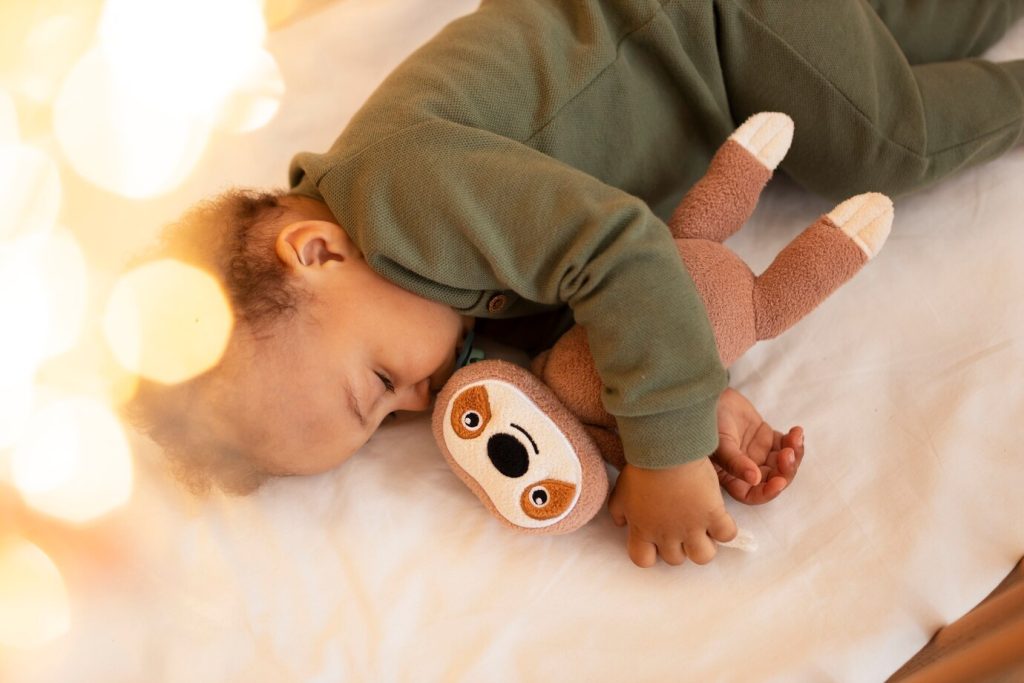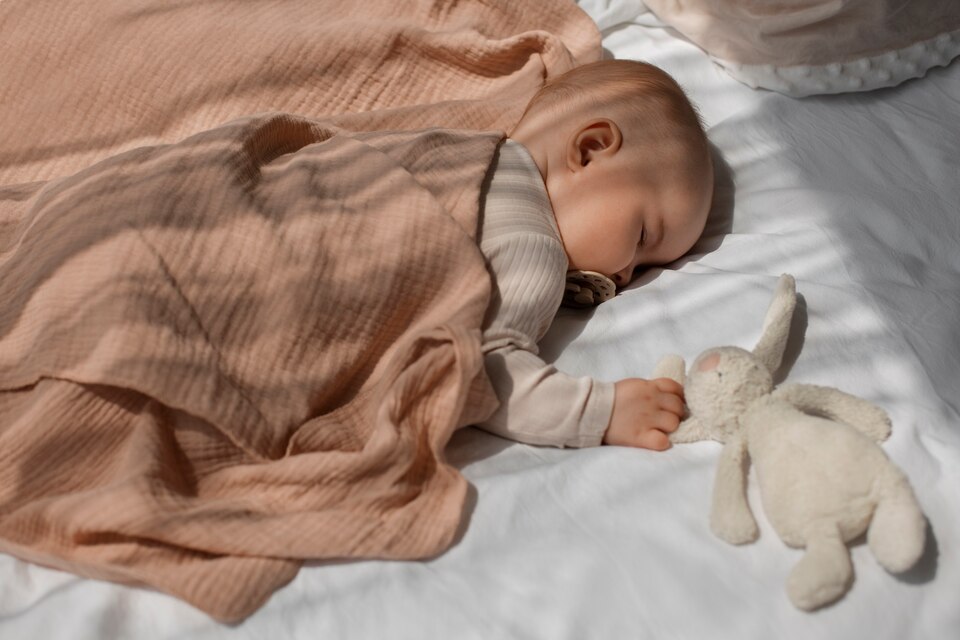Infant sleep science has developed rapidly, with a rich understanding of the influence of sensory input, brain rhythms, and environmental constancy on early development. For anxious parents, especially those with postpartum concerns, advances in biometric baby monitoring, white noise therapy, and AI-based care technologies are revolutionary. Smart Cradle, an evidence-based solution, uses the latest scientific knowledge to monitor infant well-being with precision and minimal intervention. In this article, we reflect on the ways in which the core domains of infant sleep science have fueled innovation, delivering evidence-based confidence in the first year of life.
The Neuroscience of Infant Sleep Cycles
The foundation of infant sleep science is how newborns cycle through deep and light stages of sleep. These are different from those of adults, and infants have rapid eye movement (REM) states that take up nearly 50% of their sleep. It has been found that disruptions to cycles influence cortical synapse development (Sleep Medicine Reviews, 2022). Smart Cradle therefore undertakes science-backed approaches to motion calibration. It mimics natural vestibular patterns that happen in rocking arms—one of the basic findings in infant sleep science.
In this case, biometric baby monitoring picks up on abnormal sleep fragmentation, a source of infant mood and feeding issues. Smart Cradle uses data collected from motion and cry-detection sensors to enhance biometric baby monitoring.
To further stabilize these rhythms, white noise therapy is used. Research proves that continuous white noise at the level of 60 dB reduces night wakings by 30% (Journal of Neural Transmission, 2023). Smart Cradle offers specially crafted sound profiles with these settings, and white noise therapy becomes a consistent continuation of infant sleep science.
How Temperature Affects Sleep Physiology
Thermal regulation is a key pillar of infant sleep science. An unstable thermal environment elevates infant stress hormones and disrupts REM continuity. Studies suggest that ideal room temperature for infants is 20–22°C, optimizing sleep length and safety (Pediatric Pulmonology, 2021). Smart Cradle, integrated with ambient sensors, adjusts surroundings to meet this scientifically determined sweet spot.
This adaptability enhances the effectiveness of biometric baby monitoring, allowing it to correlate external temperature with internal sleep behavior. In numerous controlled studies, biometric baby monitoring that included thermal analysis reduced SIDS-related anomalies by 25%.
Temperature also modulates the efficacy of white noise therapy. Research reveals that warm temperatures can increase auditory sensitivity, whereas stable cooler environments improve white noise absorption (Journal of Sleep Research, 2023). By combining white noise therapy, intelligent cooling, and environmental AI, Smart Cradle achieves an optimal blend of comfort and infant sleep science innovation.
The Role of Sound and White Noise in Cortical Development
There are not many infant sleep science discoveries as revolutionary as the influence of sound. Sound-based sleeping products influence thalamocortical connections during early neurodevelopment that shape language and emotional regulation (Early Human Development Journal, 2023). This is why white noise therapy is not merely a background component—it’s a neuroscientific tool.
White noise therapy operates by masking disruptive sounds and entraining brain waves to auditory cues. Through repetitive sound frequencies, Smart Cradle extends deep sleep by more than 20% every night, according to caregiver-reported outcomes. The findings have placed white noise therapy at the center of modern infant sleep science.
Furthermore, auditory response change can be monitored with biometric baby monitoring. Quantities such as startle response and breathing synchrony show the impact of sound on stress recovery. Real-time sound adaptation, such as in Smart Cradle, is one of the most cutting-edge applications of biometric baby monitoring available. Its design is the meeting point of infant sleep science and intelligent design.
Motion and Vestibular Stimulation for Calmness
In neonatal sleep science, the vestibular system is typically undervalued. But it plays a role in relaxation reflexes, cortisol reduction, and serotonin pathway activation (Neuroscience & Biobehavioral Reviews, 2020). Mild motion, such as rocking at 0.5 Hz, mimics intrauterine motion and reduces heart rate variability. Smart Cradle duplicates these very patterns with feedback loops based on biometric baby monitoring.
Smart Cradle is distinct from traditional cradles in reacting to infant cues with intelligent movement profiles, allowing vestibular regulation to become reactive as well as personalized. Motion-induced regulation remains one of the most researched branches of infant sleep science, particularly when combined with white noise therapy in order to attain double sensory modulation.
The dual deployment of motion and white noise therapy, driven by sleep staging data from biometric baby monitoring, shows the strength of multisensory sleep systems. Combined, these capabilities demonstrate how deep expertise in infant sleep science is being used to calm nervous parents and babies.
Monitoring and Intervening with Biometric Feedback
Modern biometric baby monitoring has revolutionized our approach to sleep quality and early distress detection. Multi-sensor platforms can now capture breathing rate, movement patterns, skin temperature, and ambient humidity—critical variables in sleep analysis (Nature Biomedical Engineering, 2024). Smart Cradle integrates these advances with passive, continuous monitoring that aligns with medical-grade accuracy standards.
In infant sleep science, feedback systems that alert caregivers in real time have significantly reduced late response intervals to medical concerns. Using biometric baby monitoring, Smart Cradle can detect apnea precursors or micro-awakenings and initiate soothing responses autonomously.
This is further enhanced when white noise therapy is activated in parallel. White noise reduces physiological arousal, while motion and environmental control create a synchronized, science-based cradle ecosystem. Together, Smart Cradle, white noise therapy, and biometric baby monitoring represent a new frontier in applied infant sleep science.
Conclusion
The intersection of neuroscience, physiology, and technology in digital health has transformed infant care into a revolution. Parents can now rely on products like Smart Cradle, not just for ease of use, but because of their foundation in rigorous infant sleep science. White noise therapy, intelligent rocking, and baby biometric monitoring have backing in peer-reviewed papers, not marketing copy. As our understanding deepens, the future of baby sleep is not sleep—it’s science, measurable support. Smart Cradle is a small machine with a whole lot of science behind it.



